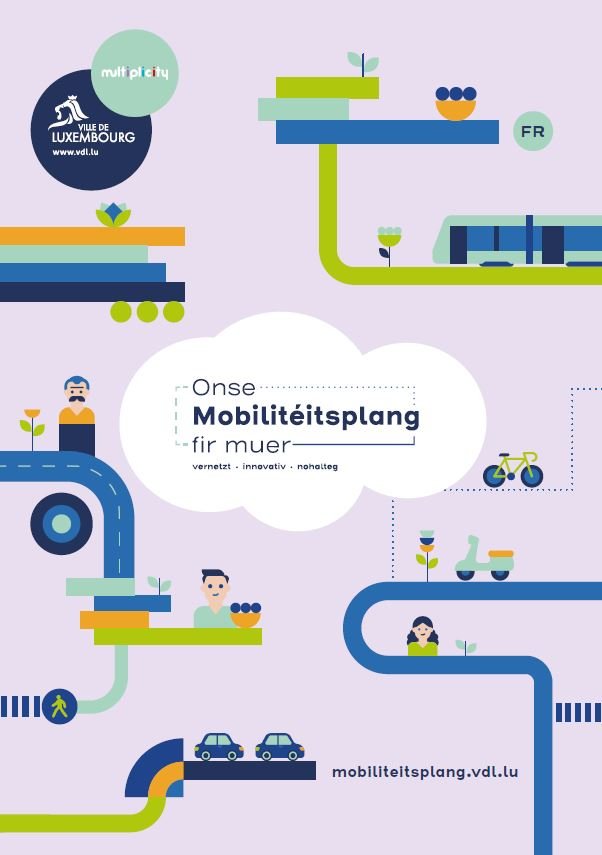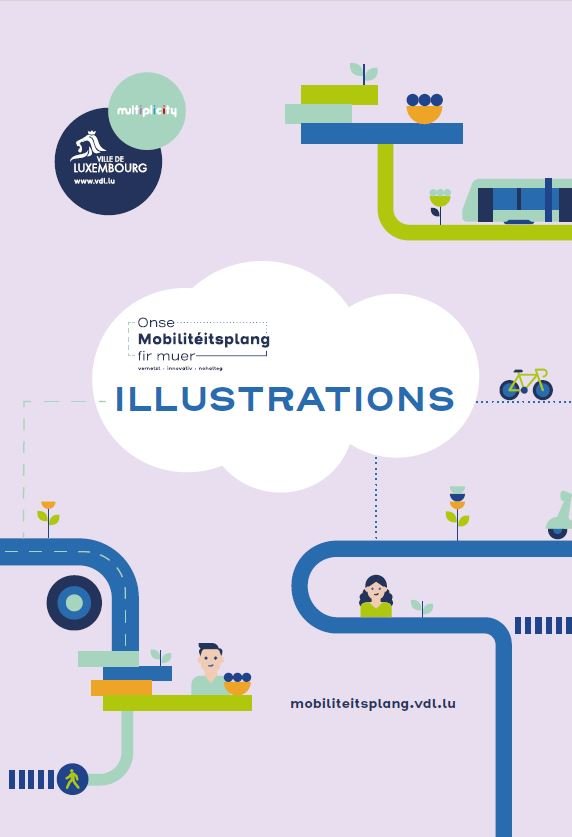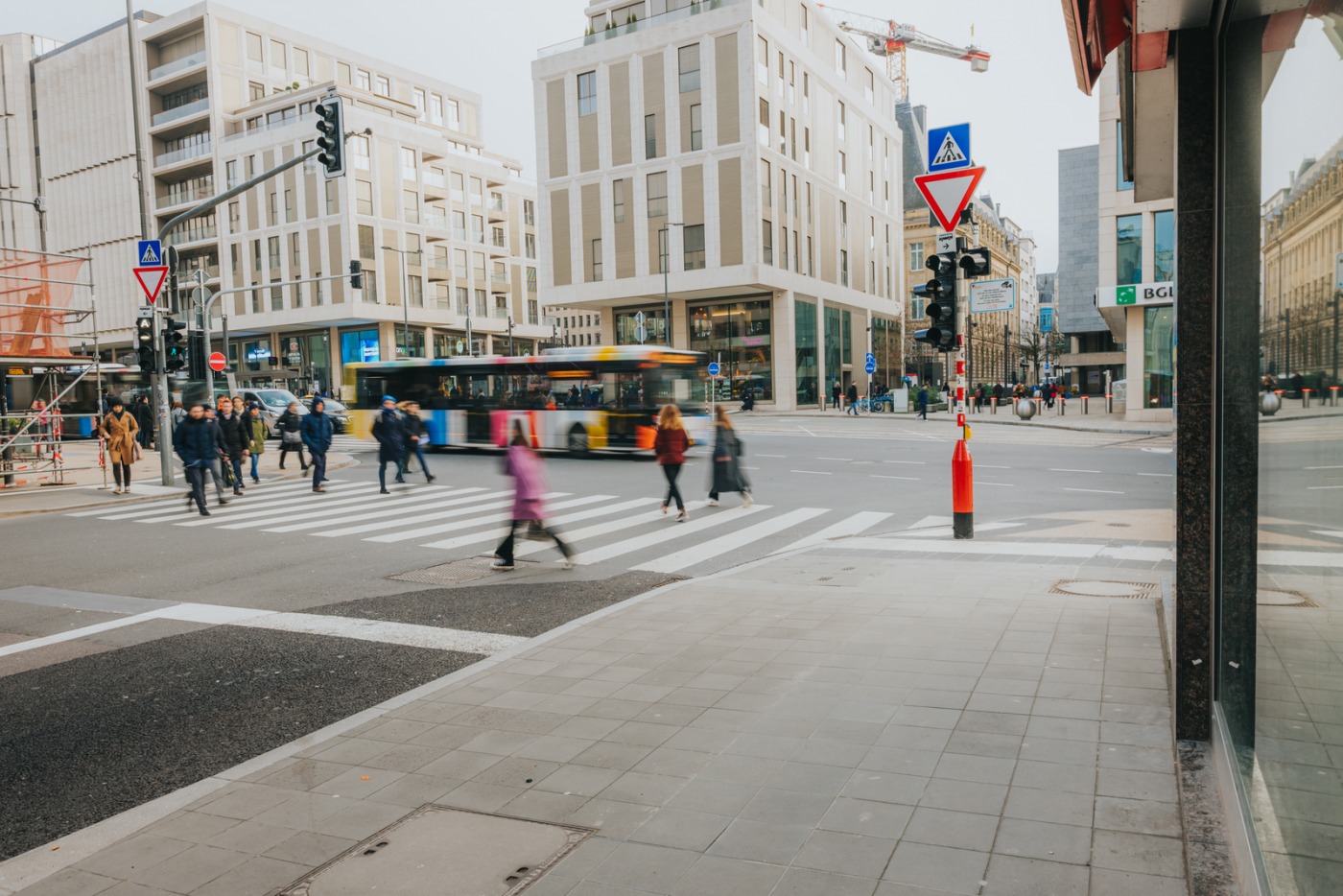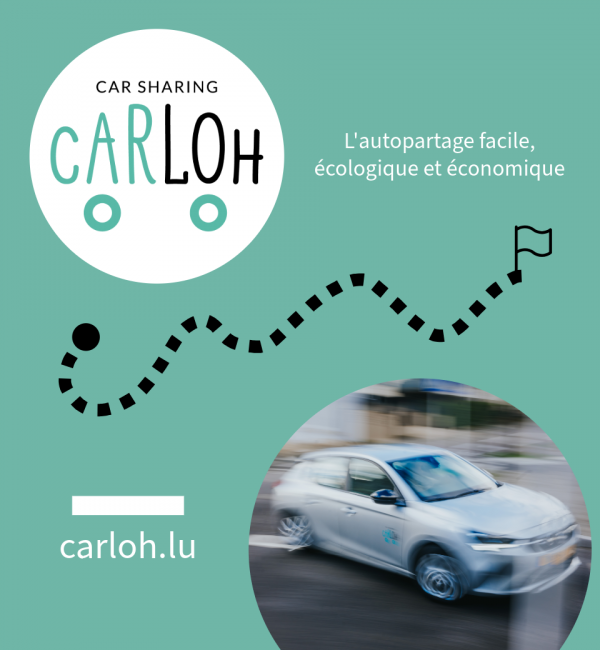The "Mobilitéitsplang"
Below, you can download the final text of the "Mobilitéitsplang" mobility plan!
Keep reading

Keep reading

Overview
The "Mobilitéitsplang" is a strategic document that sets out the urban mobility objectives that the City wishes to achieve by 2035. As such, it informs all the mobility-related measures that the City intends to implement. It covers not only various means of travel – on foot, by bike, public transport, individual motorised transport – but also the various reasons why people need to travel (commuting, getting to and from school, business trips, private trips, etc.). It also ensures that all the urban mobility measures and actions are implemented in a coordinated and efficient manner with a view to achieving the City's objectives.
The City of Luxembourg's "Mobilitéitsplang" includes an analysis of the existing transport infrastructure and services, and describes the transport infrastructure and services that are required to ensure that the city and all its districts remain accessible in the future, particularly in light of the capital's overall development – the principles of which are set out in the General Development Plan (plan d'aménagement général) – as well as its demographic and economic growth, and the challenges it faces in terms of protecting the climate and the environment.
Current state of play: analysis
Further to an analysis of the current urban mobility situation in Luxembourg City, the City was able to produce a detailed description of the various modes of transport:
The public transport services are the most efficient means of transport in the capital, capitalising as they do on a high-performance tram service – which forms the backbone of urban mobility in the city – serving several transport hubs and major thoroughfares throughout the city (Kirchberg, the city centre, the Gare district, Bonnevoie, and soon, Cloche d'Or), and municipal bus service providing access within and across the city's districts. Moreover, as the public transport services are free, this mode of transport is particularly attractive to users.
Given the prospects in terms of extension and adaptation, the public transport services show enormous potential when it comes to optimising future mobility.
- In terms of bicycle traffic, a number of major improvements have been made in the past few years, the most notable being the extension of the cycle-path network, developments to improve cyclist safety, and the creation of additional services for cyclists (bicycle parking infrastructure, etc.). With its many benefits, such as pedal-assist e-bikes and an extremely dense network of stations throughout the capital and neighbouring municipalities, the vel'OH! self-service bike system is a first-rate, efficient and comfortable means of transport.
However, the analysis also revealed the existence of many mixed-use routes, forcing cyclists to share spaces with pedestrians and sometimes even motorised traffic. As such, the development of bike-only routes will be a priority measure for future extensions of the cycle-path network, with a view to making urban cycling safer, promoting more widespread use of bicycles in the city, and using this environmentally friendly mode of transport to its full potential.
- Where pedestrian traffic is concerned, the existing infrastructure is such that pedestrians can easily cover short distances. A dense network of pedestrian thoroughfares provides safe routes for pedestrians, and technical infrastructure – such as footbridges, walkways and elevators – allowing pedestrians to circumvent topographical obstacles provides real added value.
- The analysis focussing on private-vehicle traffic shows that the existing road network is almost saturated, especially in the city centre at peak hours. Given the existing level of urbanisation, and the need to extend the public transport network and active-travel options, the potential for developing the road network is extremely limited, if not impossible.
- As for parking, a city-wide management system governs the sizeable offering of parking amenities, which include public parking spaces, car parks and Park-and-Ride facilities.
Demographic trends and possible scenarios
In formulating a strategy to achieve efficient mobility options by 2035, it is important to take into account both demographic and employment trends. By 2035, the number of residents in Luxembourg City is likely to have increased by 46% (i.e. +57,000 residents), and the number of jobs in the city is also expected to rise sharply (+30%; +50.000 jobs). This growth is one of the major challenges for future mobility: the number of journeys made – when all modes of transport are considered – is expected to increase from 857,000 (in 2020) to 1,144,000 by 2035 (+33%).
In light of these considerations, the "Mobilitéitsplang" mobility plan explores several scenarios with a view to assessing the impact of certain factors and/or measures on urban mobility. Achieving, by 2035, a modal split in which active travel and public transport services account for 51% of all means of transport, and individual motorised transport for the remaining 49%, would require developing the public transport services, and implementing measures to promote active travel, as well as measures to restrict the use of individual motorised transport. Given the increase in the number of journeys – due to the increase in size of the active resident population – and the saturation of the road network, with no real options for extending it, the objective must be to maintain the absolute number of journeys made using individual means of motorised transport at the level they stood at in 2020, as this is the only way to achieve efficient urban mobility by 2035.
Strategies and measures
To formulate various mobility strategies, the "Mobilitéitsplang" mobility plan examines the strengths and weaknesses of the various modes of transport and highlights the challenges that need to be tackled and the measures to implement to tackle them.
- To respond to an increasing demand for the use of public transport services and ensure that the bus and tram services provide a genuine alternative to individual motorised transport, it is essential to (i) optimise the existing service offerings (rapidity, priority over other means of transport, direct lines to avoid frequent changes, reduce congestion at stops, etc.), (ii) develop existing infrastructure (introduce efficient bus corridors and an alternative tram route, etc.), and (iii) increase the capacity of the public transport services.
- In terms of active travel, it is important to (i) further develop the cycling and pedestrian networks to enable fast, uninterrupted journeys (by densifying the network within the city, increasing the number of links with neighbouring municipalities, optimising traffic light settings, etc.), (ii) make journeys safer (by introducing dedicated routes for each category of users, measures to prevent hazardous situations and conflicts between users, etc.), (iii) leverage the existing service offerings (by installing additional bike racks and bike lockers, etc.), and (iv) ensure that the infrastructure is accessible to all categories of users (by lowering pavements, extending the guidance system for the visually impaired, etc.).
- In terms of the road network, streamlining road traffic on the outskirts of the capital and creating more peripheral links are necessary to prevent through traffic and ease congestion in the city. Also, in light of the increase in the number of journeys that is expected by 2035, restricting individual motorised traffic in favour of public transport services and active mobility options is crucial. In existing neighbourhoods, easing traffic is a top priority as this would improve the quality of life, and, for new districts (PAPs), road and public transport access, and active mobility options, should be considered right from the planning phase to ensure optimal accessibility. Where parking is concerned, a reassessment, and possibly a complete overhaul, is necessary (pricing, parking durations, resident parking, etc.) to ensure efficient mobility by 2035.














